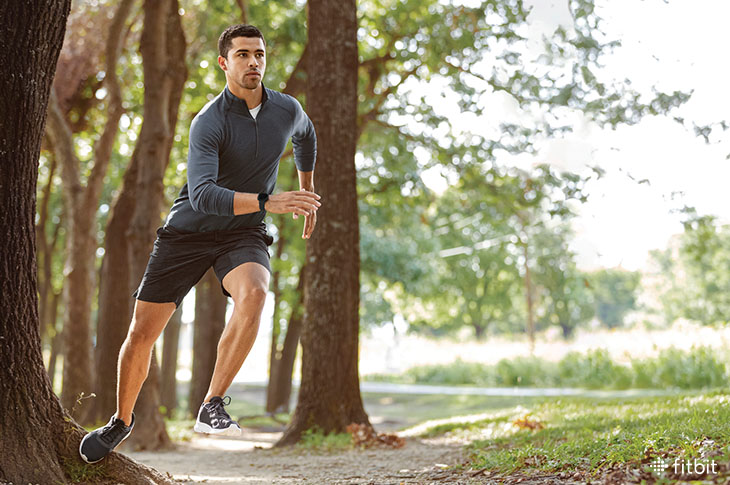
Whether you’re a competitive runner, a casual jogger, or just want to feel better on your daily walks, building unilateral stability is a must. But what is unilateral stability? Why is it important? And what exercises can you incorporate into your fitness regimen to improve unilateral stability?
What is unilateral stability?
First things first—what, exactly, is unilateral stability? “Stability is the ability to maintain our center of mass over our base of support—which is a fancy way of saying being able to maintain our balance dynamically,” says Anthony Pavlich, PT, DPT, with Airrosti, a national healthcare group focused on musculoskeletal care. “Unilateral stability means being able to maintain balance on one leg or in a single leg stance position.”
And that doesn’t just mean when you’re standing on one leg (for example, in yoga). “It also means being stable dynamically…[for example], when we’re on one leg when we’re walking, running, or jumping,” says Pavlich.
Unilateral stability is important because we spend a lot of time in this single leg stance—”but a lot of times when we train, we don’t train unilaterally,” says Pavlich. “[And] if we lack unilateral stability…we will start to develop compensations or poor movement patterns that can contribute to fatigue, injury, or just impaired performance.”
What areas do you need to work on to improve unilateral stability?
Clearly, improving unilateral stability is important. But what, exactly, does that look like? Or, in other words, what areas do you need to work on in order to improve unilateral stability?
“Is very important when we’re talking about unilateral stability to strengthen both our core muscles and our glute muscles,” says Pavlich.
When you have a strong core, it’s easier to balance, which plays a key role in unilateral stability. In addition, “a lot of our unilateral stability comes from our glute muscles, or the muscles surrounding the hip,” says Pavlich. So, by strengthening the glue muscles, you can improve unilateral stability.
It’s also important to work on strengthening the legs; since unilateral stability is all about being able to balance on one leg at a time, the stronger your legs, the easier that balance will be—and the better your form will be while walking or running.
Exercises to improve unilateral stability
If you’re looking for specific exercises to improve unilateral stability, the following moves “mirror functional movements we do throughout our daily life,” says Pavlich. “All three of these exercises challenge our balance while also working on strengthening both our core and glutes,” he says, making them ideal for building unilateral stability—and becoming a better walker, runner, and all-around mover in the process.
Step-up. Stand facing a step. Bring your foot fully on to that step and push through that heel and squeeze your glute as you come up. (You’ll feel it in your glutes, hamstrings, and calf). Keep your movement slow and controlled. Step down and repeat on the other side.
To ensure proper form (and maximum benefit), make sure “you’re not overarching in the back and that your knee is not jutting forward in front of your toes,” says Pavlich.
Single-leg deadlift. Start in an athletic stance, hips slightly back, and put your weight on one leg, keeping a slight bend in your stance leg throughout the exercise. Learn forward, lifting your non-stance leg behind you, keeping your hips square to the ground. As you return to your original stance, squeeze your glutes. Repeat with the other leg.
For proper form, make sure you’re “pushing through your heel to come back up so that you are utilizing the hamstring and glute muscle to do the movement,” says Pavlich.
Single leg glute bridge. Lay on your back with your knees bent, making sure your low back is flush with the ground.
“When you first lie down, you will feel a space between your lower back and the ground,” says Pavlich. “You want to decrease that space by rotating your pelvis backwards. Now, your back will feel flat on the ground.”
Place your hands on the ground for support—then extend one leg. With your leg extended, squeeze your glutes and raise your hips and back off the ground, pressing through the heel. Pause at the top, then slowly lower back to the floor, keeping your leg extended. Repeat the exercise on the other leg.
The post How to Build Unilateral Stability for Running appeared first on Fitbit Blog.

